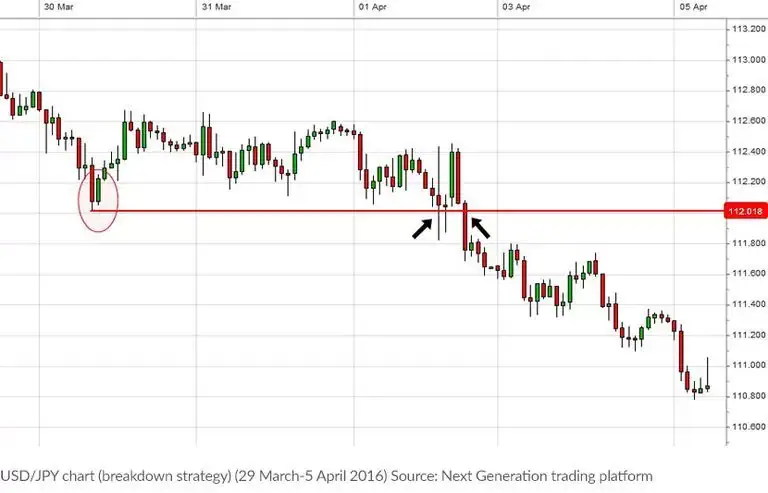Your profit or loss is determined by the difference between the entry and exit price on a trade. Remember that prices are always quoted with the sell price on the left and the buy price on the right. You enter a trade via one and exit via the other.
Forex trading example 1: buying NZD/USD
NZD/USD is trading at 0.61150/0.61160.
You decide to buy $50,000 because you think the price of NZD/UD will go up. NZD/USD has a tier 1 margin rate of 0.20%, which means that you only have to deposit 0.20% of the total position’s value as position margin. Therefore, in this example your position margin will be $100 (0.20%*50,000).
Outcome A: profitable trade
Your prediction was correct and the price rises over the next hour to 0.61360/0.61370. You decide to close your long trade by selling at 0.61360 (the current sell price).
The price has moved 20 pips (0.61360-0.61160) in your favour.
Your profit is (0.61360-0.61160)*50,000= $100.
Outcome B: losing trade
Unfortunately, your prediction was wrong and the price of NZD/USD drops over the next hour to 0.60950/0.60960. You feel the price is likely to continue dropping, so to limit your losses you decide to sell at 0.60950 (the current sell price) to close the trade.
The price has moved 20 pips (0.61150-0.60950) against you.
Your loss is (0.61150-0.560950)*50,000= –$100.
Forex trading example 2: selling EUR/USD
EUR/USD is trading at 1.13010 / 1.13020.
Let's assume poor German manufacturing data indicates that the euro is likely to fall against the US dollar in the coming days. You decide to sell $70,000 because you think the price of EUR/USD will go down.
EUR/USD has a tier 1 margin rate of 0.20%, which means that you only have to deposit 0.20% of the total position’s value as position margin. Therefore, in this example your position margin will be $140 (0.20% x [$70,000 x 1.13015]).
Outcome A: profitable trade
Your prediction was correct and EUR/USD drops over the next hour to 1.12510 / 1.12520. You decide to close your short trade by buying at 1.12520 (the current buy price).
The price has moved 49 points (1.13010 – 1.12520) in your favour.
Your profit is ([$70,000 x 1.13010] – [$70,000 x 1.12520]) = $343.
Outcome B: losing trade
Unfortunately, your prediction was wrong and the price of EUR/USD rises over the next hour to 1.13800 / 1.13810. You feel the price is likely to continue rising, so to limit your losses you decide to buy at 1.13810 (the current buy price) to close the trade.
The price has moved 80 points (1.13010 – 1.13810) against you.
Your loss is ([$70,000 x 1.13010] – [$70,000 x 1.13810]) = –$560.
Holding costs
If you hold your position past 5pm New York time (10pm UK time), your account will be debited or credited at the prevailing holding rate. If you have bought a higher yielding currency, you may receive interest; if you have bought a lower yielding currency, you may be charged interest. For more details on our FX overnight holding rates, please refer to the 'Product Overview' section on the platform for the relevant pair.
The forex market offers some of the lowest margin rates for CFD traders, find out more about forex leveraged trading.
